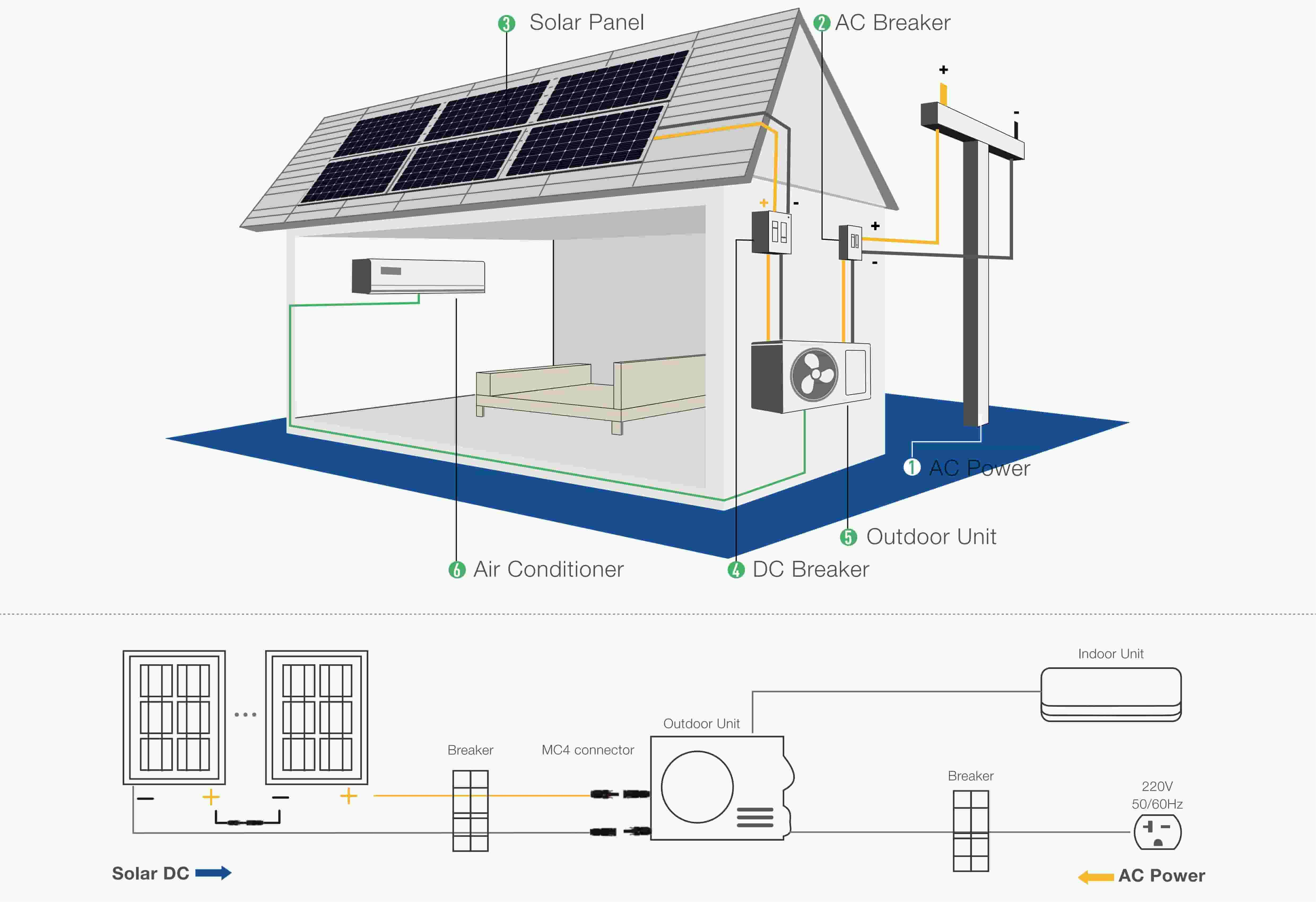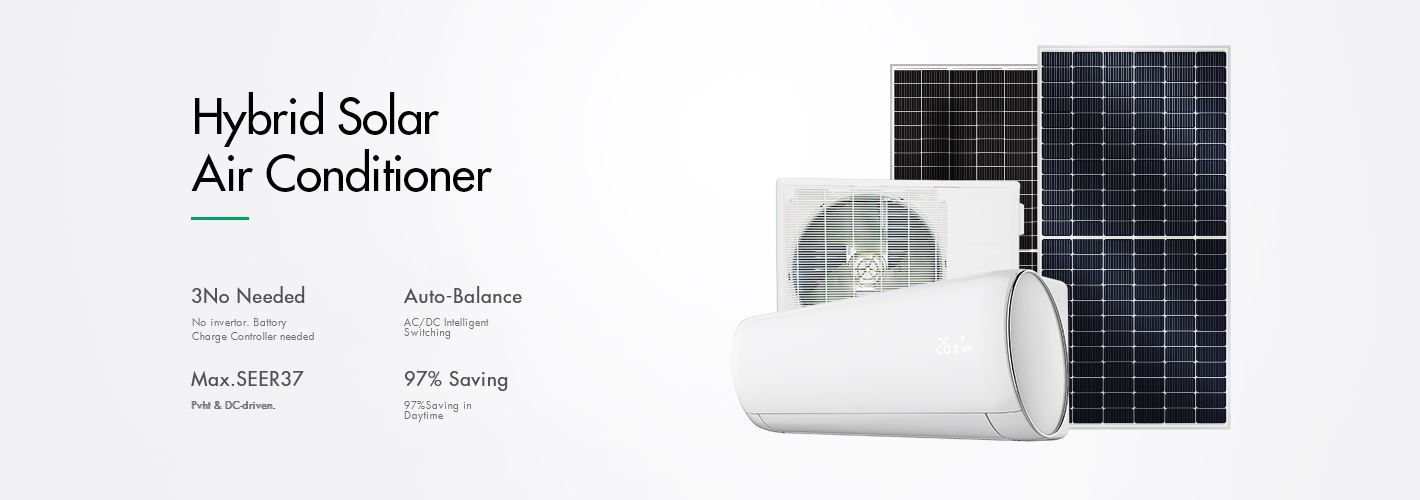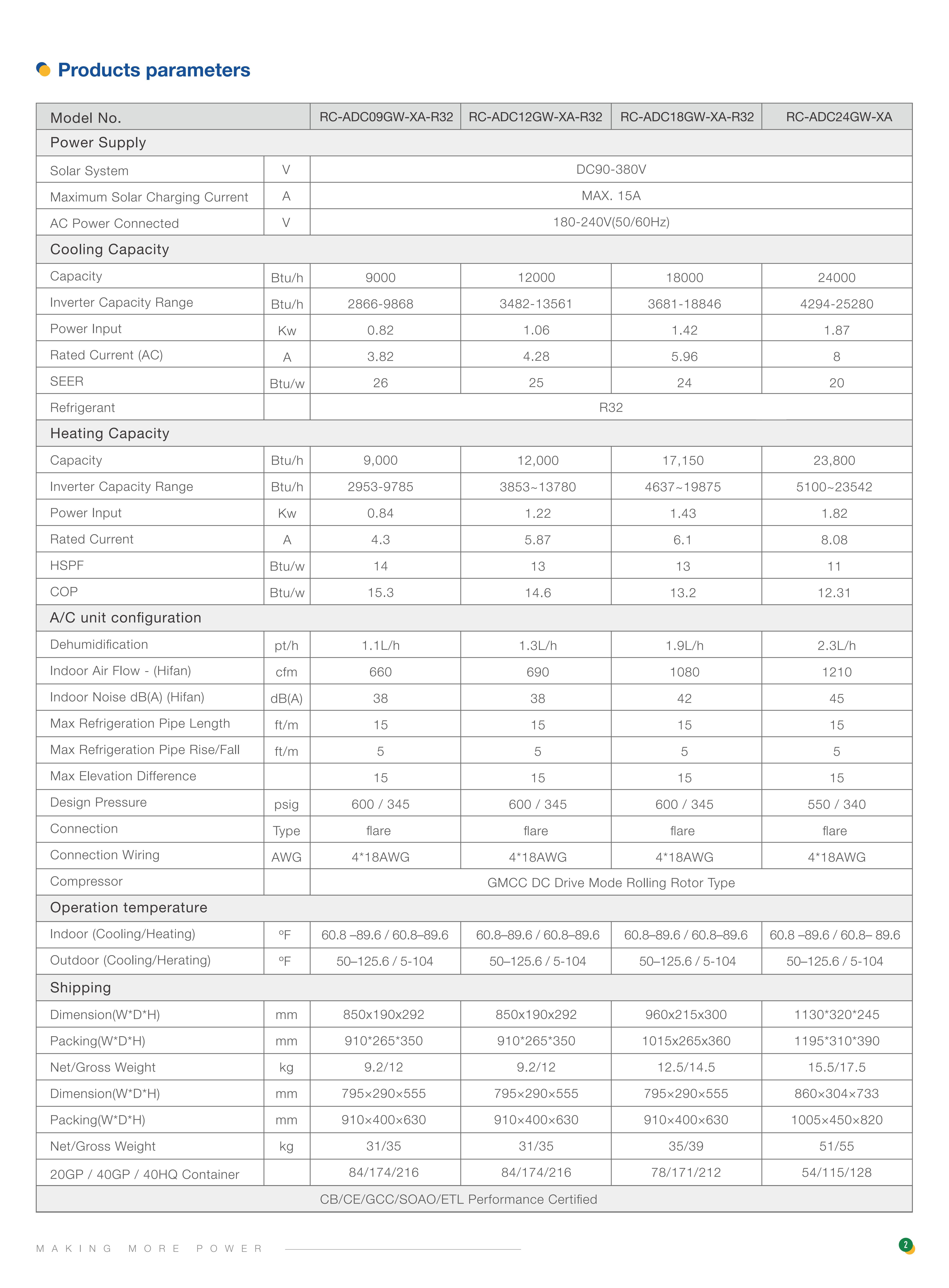A solar photovoltaic (PV) air conditioner uses standard PV panels to generate enough electricity during the day to run an air conditioner. The air conditioner units run on either direct current (DC) or alternating current (AC).
Solar panel voltage:
DC90-380VMaximum Solar Charging Current:
15AAC Power Connected:
180-240V(50/60Hz)Refrigerant:
R32Compressor:
GMCC DC Drive Mode Rolling Rotor TypeConnection:
Flare
The simplest form of solar air conditioning is a small solar panel that generates enough electricity to run a fan—for example, to cool an attic. More advanced and powerful systems use air conditioners that run just like any window air conditioner—by transferring heat from one place to another using refrigerants, coils, and a compressor.
What's different is the source of the energy that runs the air conditioner: either from water heated by the sun or from electricity generated from solar panels.
Solar PV Air Conditioners
A solar photovoltaic (PV) air conditioner uses standard PV panels to generate enough electricity during the day to run an air conditioner. The air conditioner units run on either direct current (DC) or alternating current (AC). Alternating current units require an inverter which takes the DC electricity that solar panels produce and converts it to the AC electricity that most homes run on.
Solar PV air conditioners don't need a connection to the electricity grid. Off-grid solar PV air conditioners are more likely to run on DC, since it's more efficient than converting the electricity to AC. With a battery charged by solar panels added to the system, a solar PV air conditioner can run at night. (Batteries store energy as DC, but with an inverter, a battery can be added to an AC system as well.)
A “hybrid” solar PV air conditioning system allows you to run the air conditioner off of your solar panels during the day but plug it into a normal household outlet to run it at night. Hybrid systems require a DC-to-AC inverter, and since they sometimes rely on grid electricity, they are responsible for the greenhouse gases emitted when that grid electricity was produced.

Solar thermal air conditioners are essentially solar water heaters that use the energy of the sun to heat up water. The hot water turns a refrigerant from liquid to gas, which absorbs heat when it condenses. The resulting cooler air is used for air conditioning, while the system also makes hot water available for household use.
Solar thermal systems are more efficient than solar PV systems since it's easier to heat up and cool water than it is to produce electricity to run an electricity-powered air conditioner. This means fewer panels are needed to generate enough cooling.
This can be especially useful for roofs with a limited amount of sun exposure. However, unlike a solar PV system, you can't rely on batteries or the electrical grid to run your air conditioner at night. However, in areas where the days are hot and the nights are cool, such as in the desert, this may not be a concern.
Many units sold as “air conditioners” are often mini-split heat pumps, so-called because they are split between a condenser/compressor unit outdoors and an evaporator/air-distributor unit indoors. Mini-splits work in both directions, pumping hot air out of a home in the summer and pumping it into the house in the winter. So when considering the costs and benefits of a mini-split system, factor in their heating as well as their cooling potential.

A small solar-powered air conditioner can work well to keep an attic cool and dry. The unit sits on a shingle roof, just as an attic vent might. These small systems can be purchased (and easily self-installed) for under $500. For larger systems, however, the cost of a solar air conditioning unit varies widely, depending on the type and size of the unit and how much space you want to cool.
For a 24-hour hybrid system, a direct current (DC) 12,000-BTU cooling unit sold by HotSpot Energy can cost up to $2,000, not including solar panels. Six solar panels capable of running the cooling unit can cost up to $1,600. Hybrid systems also rely on AC grid power when solar power is not available, so they need AC/DC inverters as well. Add in inverters, controllers, and mounting hardware, and the cost of a total system can be over $6,000. Similar hybrid systems are also available from SolarAir World International and by regional or local installers.
FAQs:
Q1: Do you support OEM/ODM?
A:Definitely, OEM&ODM service is supported with a certain quantity,including customize logo,package and label;
Q2: What's the production time?
A: The production time is normally 15 working days. but we will always prepare some stocks for popular models.
Q3: Can you provide DDP service?
A:Yes, if you are a personal customer and don't want to deal with the customs, we can provide DDP service to your address.
Q4: What about the warranty and how to claim?
A: Warranty period are 5 years since you receive the product, our professional after-sales team will deal with all warranty issues.